 Go Deeper! Nara's Historical and Cultural Resources
Go Deeper! Nara's Historical and Cultural Resources
 Kofun Burial Mounds and Imperial Tombs
Kofun Burial Mounds and Imperial Tombs
-
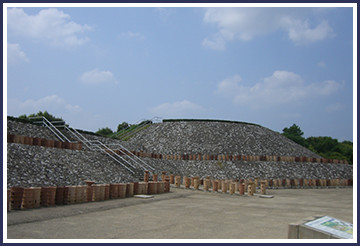
- Nara Prefecture’s Treasure Trove of Kofun Burial Mounds and Imperial Tombs
- As the central government was situated in Nara Prefecture during the Kofun, Asuka and Nara periods of Japanese history, a great many kofun burial mounds and imperial tombs were constructed here, and they are notable for the fact that they remain in relatively good condition. The earliest kofun groups and kofun belonging to the highest noble families of the early Yamato Kingship are located in the cities of Sakurai and Tenri. Imperial tombs from the days when Japan’s emperor system was established are in Asuka, the center of government following the Kofun period (250-538), and a group of keyhole-shaped kofun still exist in Saki, in the northern part of Nara City. Nara Prefecture is indeed a treasure trove of kofun and imperial tombs.
-
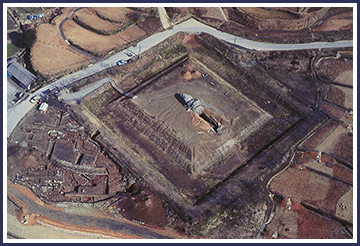 An excavation of the area surrounding the Ishibutai Tomb in 1975. From this photograph, taken before current restorations, it is easy to see the grand size and square shape of the kofun.
An excavation of the area surrounding the Ishibutai Tomb in 1975. From this photograph, taken before current restorations, it is easy to see the grand size and square shape of the kofun.
- What’s the Difference between Kofun and Imperial Tombs?
-
Kofun are burial mounds that were constructed between the middle of the third century until the seventh century, mainly as graves for highly influential people. They covered a large area and were built into elevated mounds. While some were made from digging away at natural slopes, when constructed on flat ground it was necessary to dig out a surrounding trench and use that soil to create the mounds, requiring an extraordinary amount of manpower.
Imperial tombs are kofun made especially for emperors, empresses, empress dowagers and grand empress dowagers. Nara Prefecture is said to contain the tombs of 31 of Japan’s 124 emperors and empresses. The designation of those entombed has been carried out since the Edo period (between the Genroku and Bunkyu eras, roughly 1688–1864).
-
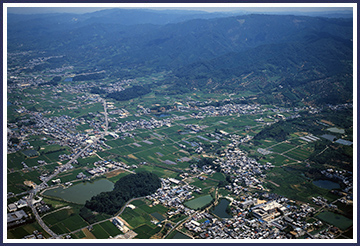 The Hashihaka Tomb (the grave of Princess Yamato Totohimomoso) is visible in the bottom left of this photograph. Above that, spanning from Sakurai City to Tenri City, is the Oyamato Kofun Group, consisting of the Shibutani Mukaiyama Tomb (Emperor Keiko), the Andonyama Tomb (Emperor Sujin) and the Nishitonozuka Tomb (Princess Tashiraka).
The Hashihaka Tomb (the grave of Princess Yamato Totohimomoso) is visible in the bottom left of this photograph. Above that, spanning from Sakurai City to Tenri City, is the Oyamato Kofun Group, consisting of the Shibutani Mukaiyama Tomb (Emperor Keiko), the Andonyama Tomb (Emperor Sujin) and the Nishitonozuka Tomb (Princess Tashiraka).
- The Reasons for Nara Prefecture’s Many Large Kofun
- Nara Prefecture is home to many large kofun, including the Gojono Maruyama Tomb (located in Kashihara City with a mound length of roughly 310 meters), the Shibutani Mukaiyama Tomb (Tenri City, length roughly 300 meters) and the Hashihaka Tomb (Sakurai City, length roughly 280 meters). Because the central government of the Kofun, Asuka, and Nara periods was located in Nara Prefecture, many influential people lived in the valleys between its mountains, said to be the reason for the abundance of kofun in the area. Over one thousand years have passed since the capital of Japan moved from Nara to Kyoto in 794, which is why Nara is sometimes called “the thousand-year countryside.” However, for the kofun and other remains in Nara Prefecture, this has another significant meaning. Disturbances due to development and other upheavals over the past thousand or so years in Nara have been infrequent, meaning that the kofun and other remains have been left in good condition. This may account for why a number of very large kofun can still be found in Nara.
-
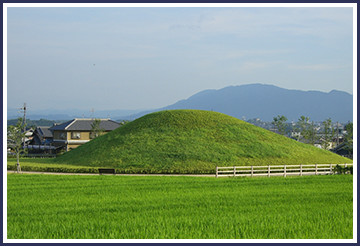
- Extravagant Funerary Wares and Grave Robbery
- Precious funerary wares could be found in the kofun of influential individuals. In the early days, these were mainly magatama beads, bronze mirrors and other ritualistic objects, however over time they came to include iron weaponry, armor and other armaments. This indicates a shift in those who were being interred, from royalty to warriors. Nevertheless, the graves were sometimes robbed by those coveting the extravagant objects the kofun contained. During the Taisho period (1912–1926) the Saki Misasagiyama Tomb in Nara City was robbed, and the funerary wares eventually found their way to an antique dealer. This incident allegedly caused a huge stir in the press at the time. Much earlier, during the Kamakura period (1185–1333), the Hinokuma no Ouchi no Misasagi Tomb in the village of Asuka was also robbed. According to reports at the time, the grave itself was made of marble and split into two sections, with a gilt bronze door and receptacles for cremated bones and organs made of silver. In fact, it was as a result of these reports that the Hinokuma no Ouchi no Misasagi Tomb came to be designated as the resting place of Emperor Temmu and Empress Jito.
-
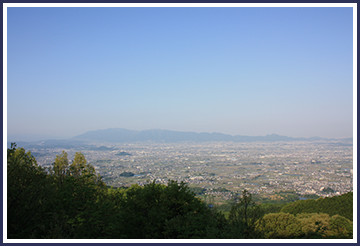
- Protecting Imperial Tombs from Development
- When a kofun is designated as an imperial tomb, it comes under the jurisdiction of the Imperial Household Agency and is protected from any development activities. As a general rule, excavating and even entering the tombs is also prohibited. A variety of restrictions such as these are to be expected when an imperial tomb is classified as such, however it is thanks to these restrictions that the tombs have evaded development in times of strong economic growth and remain intact today. Ceremonies are still performed at imperial tombs by the Imperial Household Agency, and members of the Japanese Imperial Family are known to visit the Mausoleum of Emperor Jimmu in Kashihara City to celebrate their coming of age.
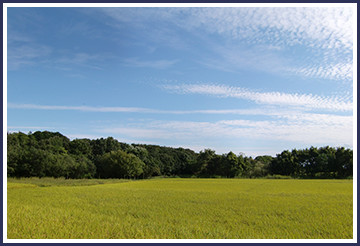
Today, we are able to look out over the location of the imperial tombs covered in thick greenery, a notable landscape unique to Nara Prefecture and its long history.
Sources
Hiroyuki Hashimoto, Chief of Planning Division
Daisuke Mochida, Principal Researcher
Archaeological Institute of Kashihara, Nara Prefecture
